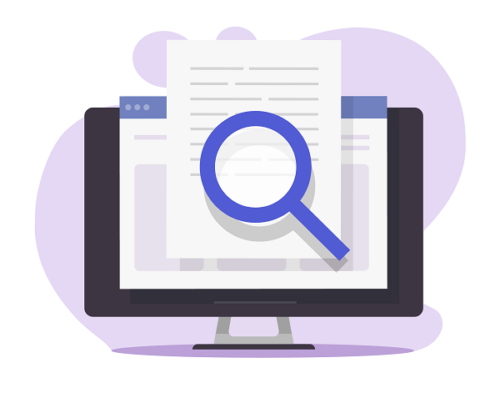eDiscovery Daily Blog
How Automation Complements the Human Side of eDiscovery Review
If there’s one constant throughout human history, it’s that change is inevitable. In the legal world, some law firms and legal service providers often keep the status quo hoping they won’t be affected by the changes around them. For the rest, they adapt and integrate new eDiscovery technologies to include features like automation to find successful ways to overcome these changes.
Adopting new technology is never an easy transition and it does come with concerns. But, we’re still not at a place where the software can litigate your case and accurately assign classifications for each document without human input. The need for human reviewers will always have incredible value to your firm but, automating the common challenges of eDiscovery document review will help your team work faster and more effectively.
Learn how automation and eDiscovery come together to accelerate your legal document review process here.
Differences in Opinions: eDiscovery Solutions
Legal document reviewers are usually specially trained associates who need to analyze complex information quickly and make decisions based on:
- Relevance
- Privilege
- Responsiveness
- Confidentiality
Unfortunately, there’s often a difference of opinion within these teams which can lead to inaccuracy and inconsistencies in the classification of documents. In fact, in a study released by Autonomy, Inc., experts from seven professional review teams were asked to review a selected set of 28,000 documents. In the end, the experts unanimously agreed on the classification of only 43% of the documents.
This means more than half of your documents could potentially be misclassified making your eDiscovery more challenging.
Removing the Guesswork in Legal Document Review
Legal document reviewers are often presented with a broad overview of the matter along with a binder of protocols and example documents. This training includes little eDiscovery data and a lot of guesswork as to what is being sought after in the documents.
A few days – or sometimes weeks – after the eDiscovery review has begun, a quality control team reviews the progress to identify discrepancies in classification and specific reviewers with low accuracy. At this point, the reviewing team is retrained with more specific protocols based on the errors uncovered.
Having more accurate protocols from the onset of your legal document review supports productivity and avoids wasted time and effort.
With improved efficiency, your legal team is one step closer to optimizing your eDiscovery review process. Learn how to accelerate your eDiscovery even more in our eBook: Optimize eDiscovery Cost Recovery .
Flawed Legal Document Review Protocols
When legal review protocols are established, they’re usually created by subject matter experts, well-versed in the matter. Despite their credentials, the initial review protocols can suffer from two primary flaws:
Flaw 1: Lack of Knowledge: When the expert creates the review protocols, they usually do so before they’ve had a chance to review the documents in context to better account for variations in the review set.
Flaw 2: Lack of Understanding: Once the protocols are written, the reviewers have to fully understand them or efforts to accurately classify documents becomes much more difficult and error-prone.
Improving eDiscovery Review with Better Protocols and More Accurate Classifications
Errors and inefficiency in document review is often linked to insufficient training. Review teams will struggle to understand exactly what they’re looking for if protocols are too vague and don’t account for unforeseen variations. This results in too many discrepancies in your document classification.
The solution lies in leveraging automation to support human expertise and equip them with sound training of the review protocols and classifications.
Establishing Stronger Protocols for Legal Document Review
First, select a diverse collection of documents through early sampling so your expert can review an ample variety of documents, concepts and classifications. As you create the review protocols, allow your review team to interact with these documents for more hands-on experience with the document set.
Next, ask each reviewer to classify the same small batch of documents so you can provide immediate feedback on their classifications. If they classified a document incorrectly, you now have an opportunity to question their decision-making to determine why they did it and if the protocols were unclear or misleading.
Get More Accurate eDiscovery Classifications
Once training is complete, you can review the results to check the accuracy of each reviewer. This helps you identify individuals on your review team who need additional training. In addition, you can create a threshold accuracy score each reviewer is required to meet before they’re allowed to begin reviewing actual documents from the data set.
This level of review evaluation helps:
- Identify poorly performing reviewers
- Informs your decision-making on review assignments
- Improves the overall quality of the early stages of the review
All of these lead to more accurate and cost-effective reviews.
Using CloudNine Review Automation to Improve eDiscovery Review
CloudNine Review offers an automated eDiscovery solution that’s fast, affordable, and easy to use. By utilizing the automation in our solution, you’ll be able to improve your training based on your reviewers’ accuracy and speed. This allows you to:
- Create immediate feedback and critique for your reviewers.
- Establish a more thorough understanding of classification protocols.
- Improve review efficiency making it faster and more accurate.
Plus, you’ll be able to improve your initial review protocols by tracking which were misunderstood by your reviewers so you can determine why they were misunderstood and what you can do to make them more understandable.
It’s time for you to check out CloudNine and see what it can do to improve your document review. Request a free demo and let us show you how CloudNine Review uses automation to improve the human element of your eDiscovery review.




